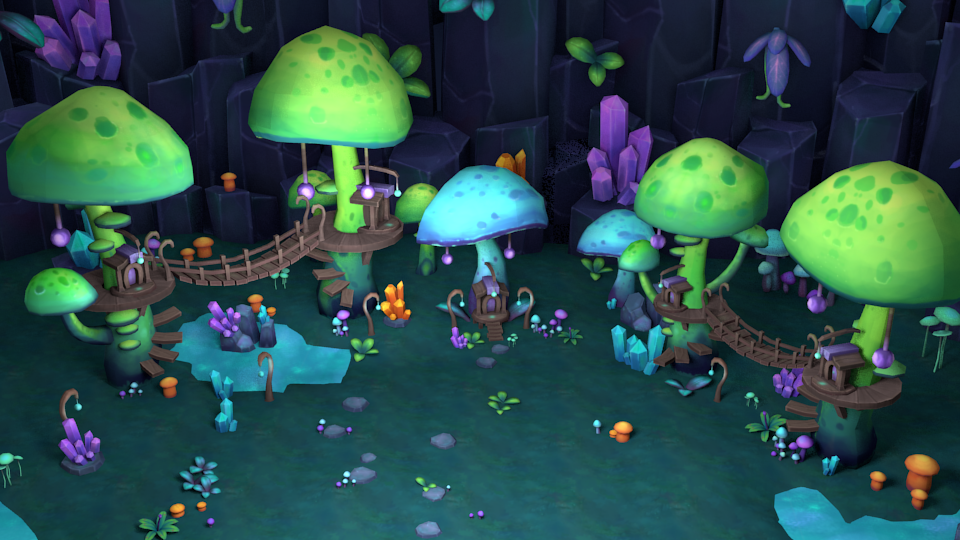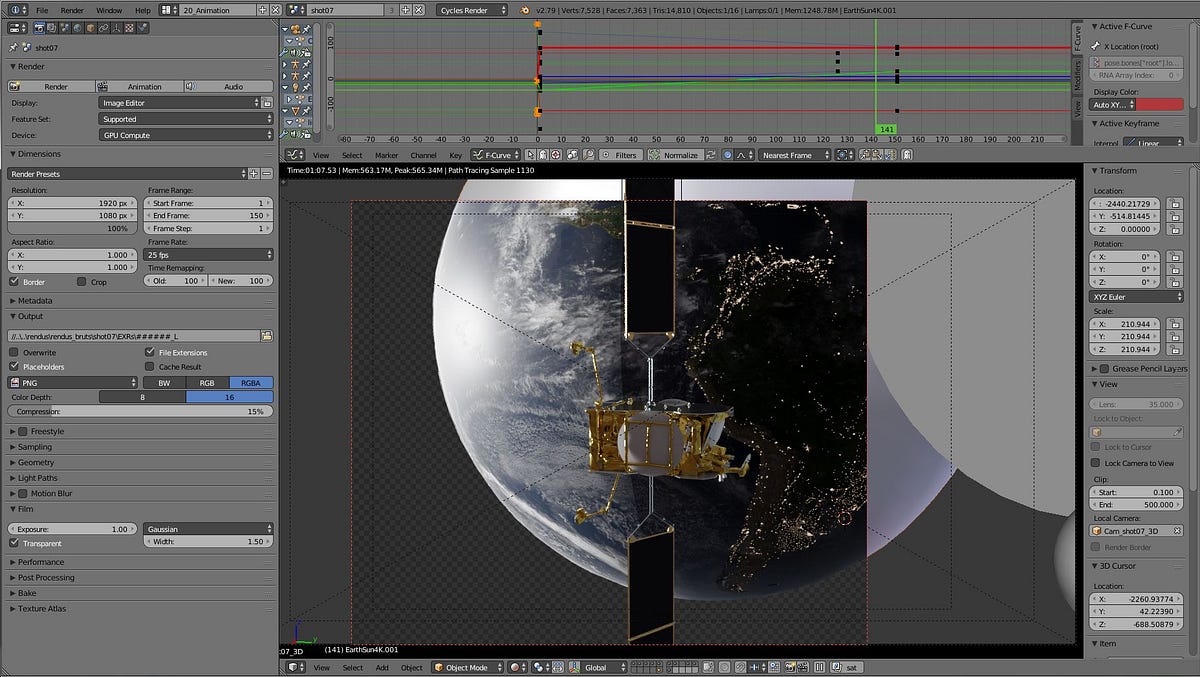If you build it (together), they will come…
If you build it (together), they will come…
Mozilla and the Khronos Group collaborate to bring glTF capabilities to Blender
Mozilla is committed to the next wave of creativity in the open Web, in which people can access, create and share immersive VR and AR experiences across platforms and devices. What it takes though is an enthusiastic, skilled and growing community of creators, artists, and also businesses forming a healthy ecosystem, as well as tool support for web developers who build content for it. To overcome a fragmented environment and to allow for broad adoption, we need the leading content format to be open, and frameworks and toolsets to be efficient and interoperable. Ensuring that tools for creation, modification and viewing are open to the entire community and that there aren’t gatekeepers to creativity is one of the main working areas for Mozilla’s
In this case: together with the Khronos Group and developers of existing open source Blender tools, we are providing a complete GL Transmission Format (glTF) import AND export add-on for Blender, offering a powerful and free round-trip workflow for WebXR creators. This effort builds on the work of existing open source tools, and adds support for the newest Blender and glTF features. The tool itself along with further technical details will be available in the coming weeks. The blueprint for the collaboration model that allowed us to get there already exists. This article will explain how we got there, how this model works, and why it can accelerate the ecosystem.
Where do we start? Understand the ecosystem!


The glTF format, the “JPEG of 3D”, is a cornerstone for interoperable 3D tools and services. It is royalty free and coordinated by the Khronos consortium. It not only finds uses in consumer products, such as games, or social VR tools like Mozilla
The initial analysis was shared with the Khronos glTF working group. This working group brings together ecosystem stakeholders “to cooperate in the creation of open standards that deliver on the promise of cross-platform technology”. Several partners participated in the next iteration analysis of the tools for content creators, the contributions of Don McCurdy from Google, Patrick Cozzi from Cesium and our own Fernando Serrano García were particularly helpful. The result was a clear recommendation to support the development of Blender tools for glTF.
Leveraging Common Interests
Blender holds a unique place among 3D content creation tools — it is free, open source, popular, and available to anyone. We are especially excited by the timing, as the upcoming release of Blender 2.8 promises powerful physically-based rendering (PBR) and a greatly-improved user interface. Round-trip glTF import and export in Blender raises the baseline for WebXR developers, designers, and creators. Anyone, anywhere in the world, can create, edit, and remix glTF models without having to purchase specialized software.




Blender is not only used by professional filmmakers (think Wonder Woman!) but also by organizations like NASA, and Airbus, who is also one of our partners in the development of the Blender glTF tools. They are using the glTF format internally to visualize their Blender created mock-ups both in VR and AR. Since their internal solution has gotten more and more traction and is to be used group wide on helicopters and aircrafts for realistic renderings and light analysis, they commissioned the independent developer Julien Duroure to build some of the foundational pieces of the Blender tools.
After the joint ecosystem analysis Khronos, UX3D, and Mozilla decided to co-fund the development of the Blender importer and exporter tool. UX3D, a Munich based GPU software solution provider, has been doing most of the development work, building on top of the previous work for the Blender importer by Julien.
And because this is open source, he has kept contributing his time outside of his engagement with Airbus to further develop these tools. Adding to existing contributors, having a strong open source community that is able to maintain these tools makes the project sustainable in the long term.
A Model for Future Developments


This model of collaboration — first jointly identifying priorities and then co-funding the development of specific features of software for the benefit of all parties — enables the ecosystem to move faster while at the same time allowing partners to share the investment. With the Blender glTF tools we created the blueprint: the working group members agreed on the scope of work, Khronos collected the funds from the co-funding partners, and managed the engagement with the developers. We hope that other ecosystem partners will follow this model in the future and that we can together accelerate the advancement of the glTF standard and the WebXR ecosystem.
With Firefox Reality and soon with support for Blender we see how the potential of the open Web is made tangible in emerging technologies such as VR and AR. As these technologies start being used to create different types of content, such as art, educational, and professional resources, the tools to both create and access experiences should be open and accessible for everyone.
With the glTF Blender import and export tool being released and ready for beta testers around the time of the Blender conference in late October, we hope that the Blender tools will unleash the creativity of the global community. We’ll share a deep dive on the tool on Mozilla’s Hacks blog in the coming weeks.
